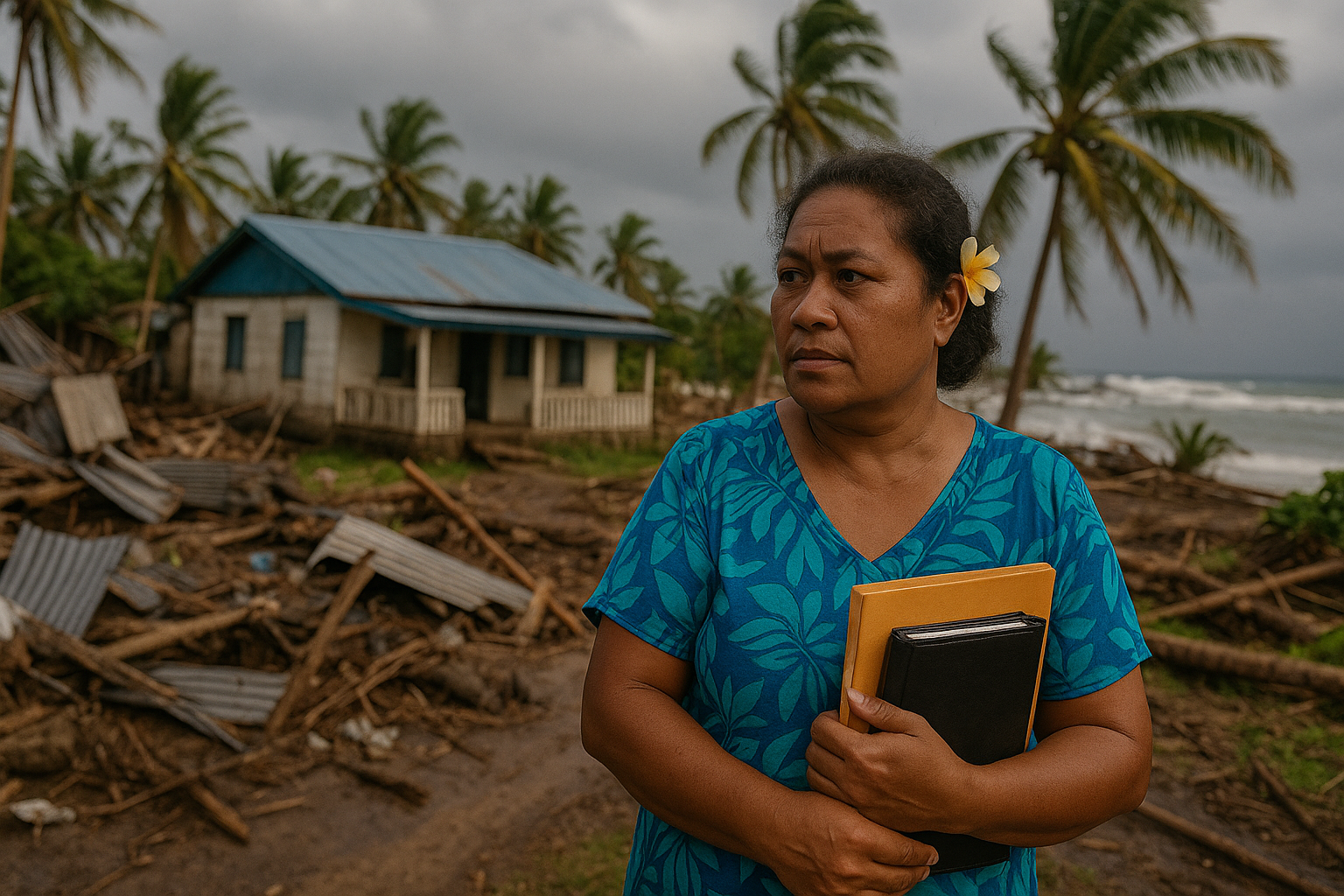Resilient but Exposed: Why Pacific Women Need Inclusive and Affordable Insurance
The ADB’s 2025 report highlights the severe insurance gaps faced by women in Pacific Island countries, exposing their vulnerability to climate, financial, and life-cycle risks. It calls for gender-responsive insurance solutions, regulatory reforms, and inclusive partnerships to enhance women’s resilience and economic empowerment.

In a region shaped by vibrant cultures and fragile economies, women in Pacific Island Countries (PICs) are essential drivers of economic and community life. The Asian Development Bank’s July 2025 report, developed under its gender equality and financial inclusion initiatives and informed by institutions like the Women Entrepreneurs Finance Initiative, Pacific Private Sector Development Initiative, and Women’s World Banking, exposes the systemic gaps in insurance access faced by Pacific women. Though official labor force participation ranges from 39% in Fiji to 61% in Vanuatu, these numbers barely scratch the surface. Most women work in the informal economy, markets, agriculture, and handicrafts, often without social protection or financial safety nets. Micro, small, and medium-sized enterprises (MSMEs), 90% of which are informal, serve as their entry point into economic activity, but limited access to finance, land, and networks constrain their growth. They also bear the burden of unpaid care work, spending three times more hours on it than men, making them more vulnerable to shocks and disruptions.
Battling Disasters Without a Safety Net
The Pacific region ranks among the most disaster-prone on Earth, frequently battered by cyclones, floods, droughts, and earthquakes. Cyclone Winston in 2016 cost Fiji nearly 30% of its GDP, while Cyclone Gita in 2018 wiped out 37.8% of Tonga’s. For women entrepreneurs operating in climate-sensitive sectors like agriculture or artisanal production, these disasters are economically devastating. The risks go beyond physical losses; disasters also increase women's unpaid labor. They must care for displaced relatives, fetch water, nurse the sick, and rebuild food security. Limited mobility and caregiving duties further endanger them during evacuations; women represented 70% of adult deaths in the 2009 Samoa and Tonga tsunami. Despite such high exposure, disaster-linked insurance products for women are virtually nonexistent. Overall insurance penetration remains extremely low, 3.8% in Fiji, 1.4% in Papua New Guinea, and under 2.5% in the Solomon Islands, Vanuatu, and Tonga. Most available products target high-income, formal-sector earners. Health insurance with maternity benefits, business interruption protection, or crop coverage is scarce. Climate risk insurance, crucial in this region, is almost absent.
When Tradition Becomes the Only Backup Plan
Lacking formal safety nets, women across the Pacific rely heavily on traditional social protection systems. Kinship-based networks like the wantok in PNG and Solomon Islands, fa’alavelave in Samoa, and veiwekani in Fiji provide emotional and financial support during crises. Community-based savings groups and burial funds also serve as informal financial tools. However, these mechanisms falter in the face of large-scale or prolonged shocks like cyclones or pandemics. Shared hardship depletes collective resources, leaving women with few options. Even when retirement funds are available, women often withdraw savings early after disasters, undermining their future security. During COVID-19 and Cyclone Winston, for instance, affected women withdrew from pension schemes to fund household recovery, effectively trading long-term well-being for short-term survival. When informal systems fail, women may resort to damaging coping strategies: pulling children out of school, selling livelihood assets, or borrowing from moneylenders. These actions reduce future income potential and increase intergenerational poverty risks.
Regulatory Barriers and Gender Gaps in the Insurance Industry
The insurance landscape in the Pacific is fragmented and constrained. Geographic isolation, small market sizes, limited infrastructure, and high transaction costs make traditional insurance models unviable for many providers. In countries like Tonga, there is no formal insurance regulatory framework at all. In others, such as PNG, regulatory oversight is split across agencies, creating inefficiencies and ambiguity. Even where regulation exists, the focus tends to be on corporate or formal-sector needs. Few policies cater to women, especially in rural and informal settings. Another overlooked factor is gender diversity in the industry itself. Women occupy only 26% of board seats and 20% of CEO roles in Pacific insurance firms. This lack of representation contributes to a lack of gender-responsive product design and outreach strategies. Yet data suggests women are highly loyal clients, careful financial planners, and more likely than men to reinvest in family and community, traits that align perfectly with the insurance model if tapped properly.
A Blueprint for Inclusive Growth and Resilience
Despite the challenges, innovative examples in and beyond the Pacific reveal what’s possible. The Pacific Insurance and Climate Adaptation Programme (PICAP) has piloted parametric insurance in Fiji, Vanuatu, and Tonga. These policies, triggered by measurable weather events like rainfall or wind speed, offer quick, low-cost payouts to farmers, fishers, and market vendors, many of whom are women. Internationally, success stories abound: in Ghana, Tigo linked free life insurance to mobile airtime; in Brazil, Mapfre bundled life insurance with retail services; in India, Smart Women plans include maternity and cancer benefits. These models combine affordability, cultural familiarity, and trusted distribution networks, proving that inclusive insurance is not just feasible but profitable. The ADB calls on governments to harmonize regulations, support pilot programs, and introduce smart subsidies to encourage market entry. Insurers must develop bundled, client-centric products and invest in women-friendly distribution channels. Development partners can offer technical support, regulatory guidance, and digital innovations to scale inclusive solutions. Women in the Pacific already manage risk daily, in their homes and businesses. Equipping them with insurance is not only a matter of justice, it’s a strategic investment in the region’s long-term stability and inclusive prosperity.
- FIRST PUBLISHED IN:
- Devdiscourse
ALSO READ
Indian MSMEs Embrace Digital Future, But Offline Retail Holds Firm
Revolutionizing Justice: India Launches Online Dispute Resolution for MSMEs
Boosting Nagaland MSMEs: New Initiatives and Global Goals
MSMEs Drowning in Regulatory Web: A Need for Reform
Empowering MSMEs: The Backbone of Aatmanirbhar Bharat










